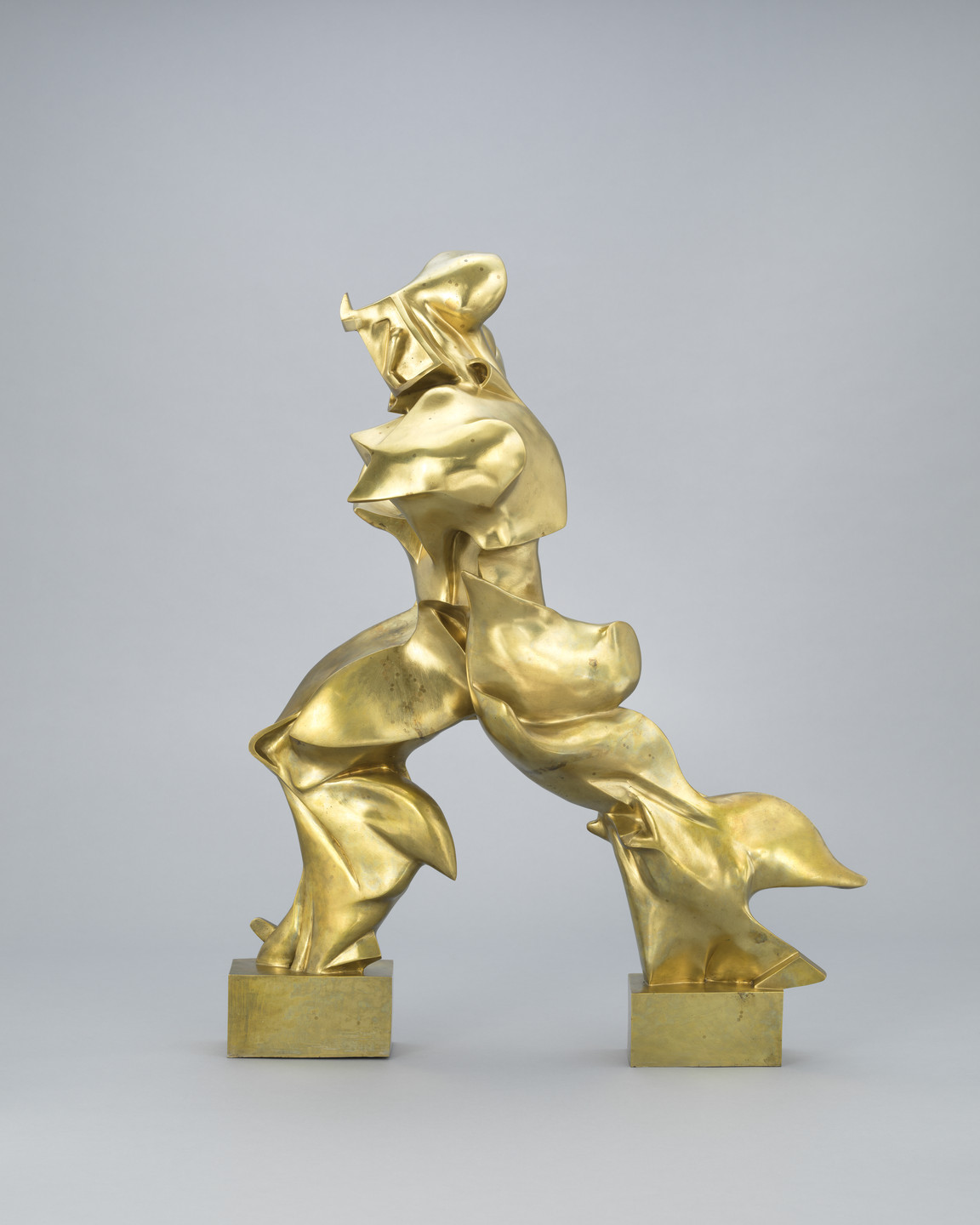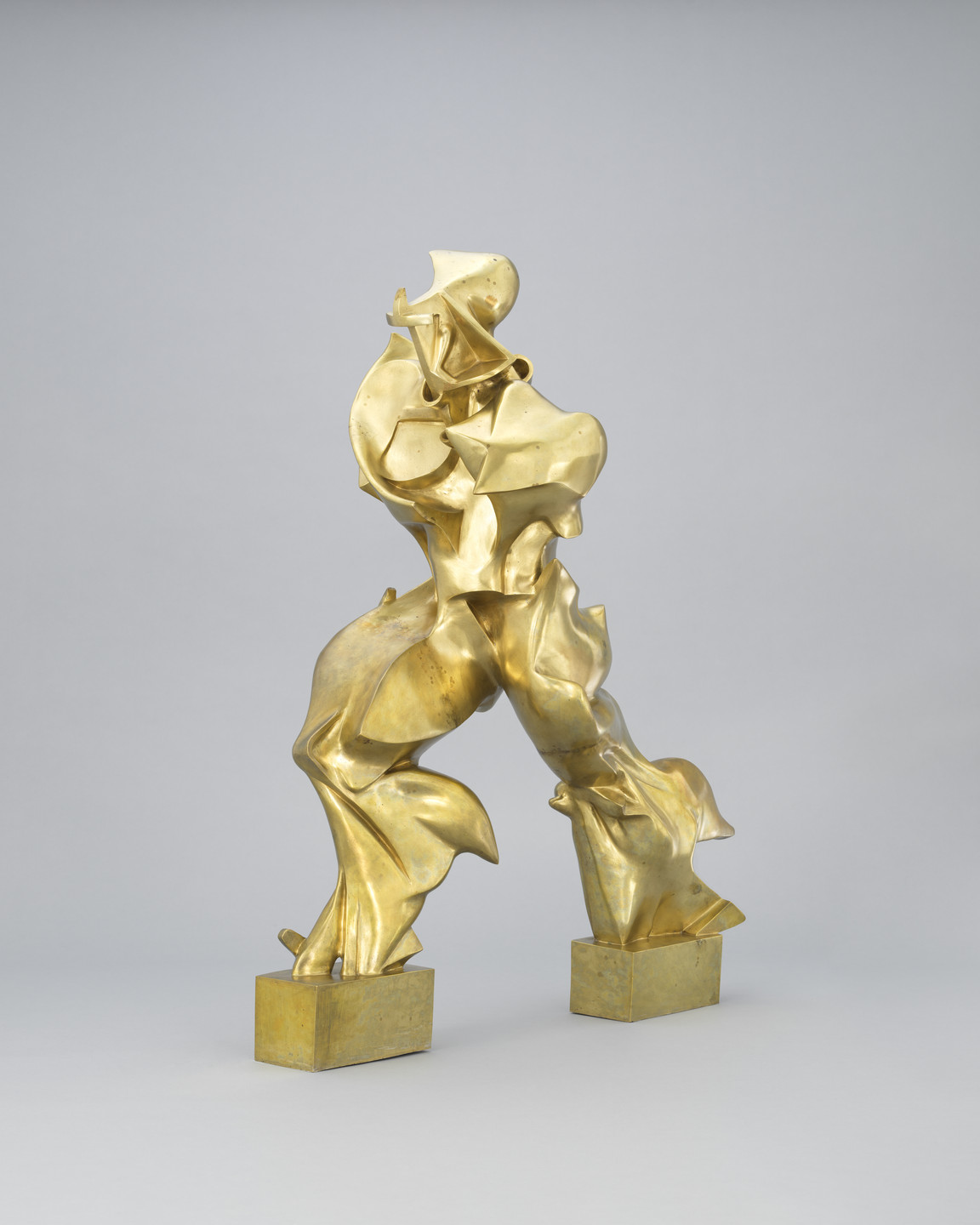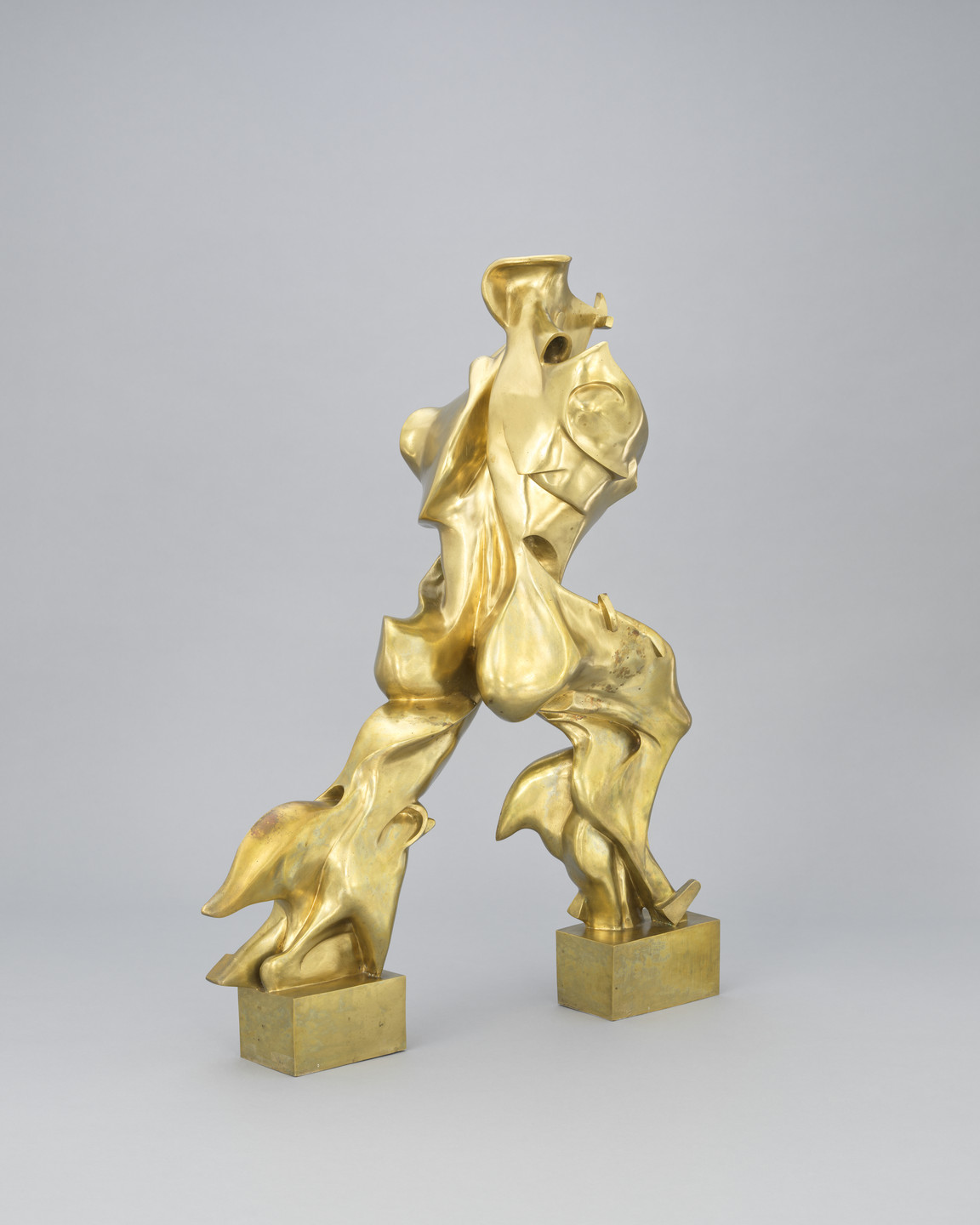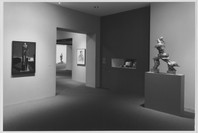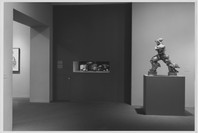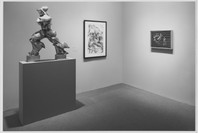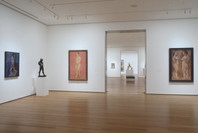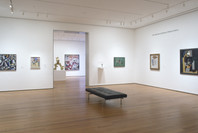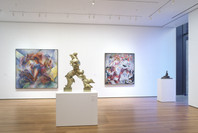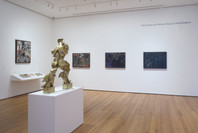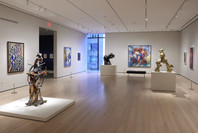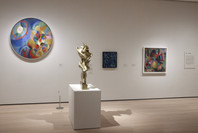Unique Forms of Continuity in Space integrates trajectories of speed and force into the representation of a striding figure. It does not depict a particular person at a specific moment, but rather synthesizes the process of walking into a single body. For Boccioni, one of the key figures in the Italian Futurist movement, this was an ideal form: a figure in constant motion, immersed in space, engaged with the forces acting upon it.
Boccioni professed no love for classical or Renaissance sculpture. In Futurist Painting Sculpture, a manifesto-style book published in 1914, he wrote that “anyone today who considers Italy to be the country of art is a necrophiliac who thinks of a cemetery as a delightful little alcove.” He declared that art should “have a strict historical relation with the moment in which it appears”; the sculpture of the early twentieth century, he felt, would evoke the speed and dynamism of Italy’s recent industrialization. Boccioni and the other Futurists even embraced the coming world war as a natural development, one that would destroy the remnants of the past and bring humans and machines closer together.
Publication excerpt from MoMA Highlights: 375 Works from The Museum of Modern Art, New York (New York: The Museum of Modern Art, 2019)
“Let us fling open the figure and let it incorporate within itself whatever may surround it,” Boccioni exclaimed. Breaking with sculptural tradition, he opened up the silhouette of this marching figure, who forges ahead as if carved by speed. While the triumphant stance and armless torso evoke statues from earlier art history, the polished metal alludes to sleek new technologies. Boccioni was a central figure in the Futurist movement, whose members vehemently renounced the past in favor of creating forms that emulated the dynamism and ingenuity of the machine age.
Gallery label from 2019
Boccioni, who sought to infuse art with dynamism and energy, exclaimed, “Let us fling open the figure and let it incorporate within itself whatever may surround it.” Breaking with the tradition of self-contained sculpture, Boccioni opens up the silhouette of this marching figure, who forges ahead as if carved by forces such as wind and speed. While born of Futurist aspirations, it also remains evocative of an ancient statue: the wind-swept, striding Victory of Samothrace in the Musée du Louvre in Paris.
Gallery label from 2018
